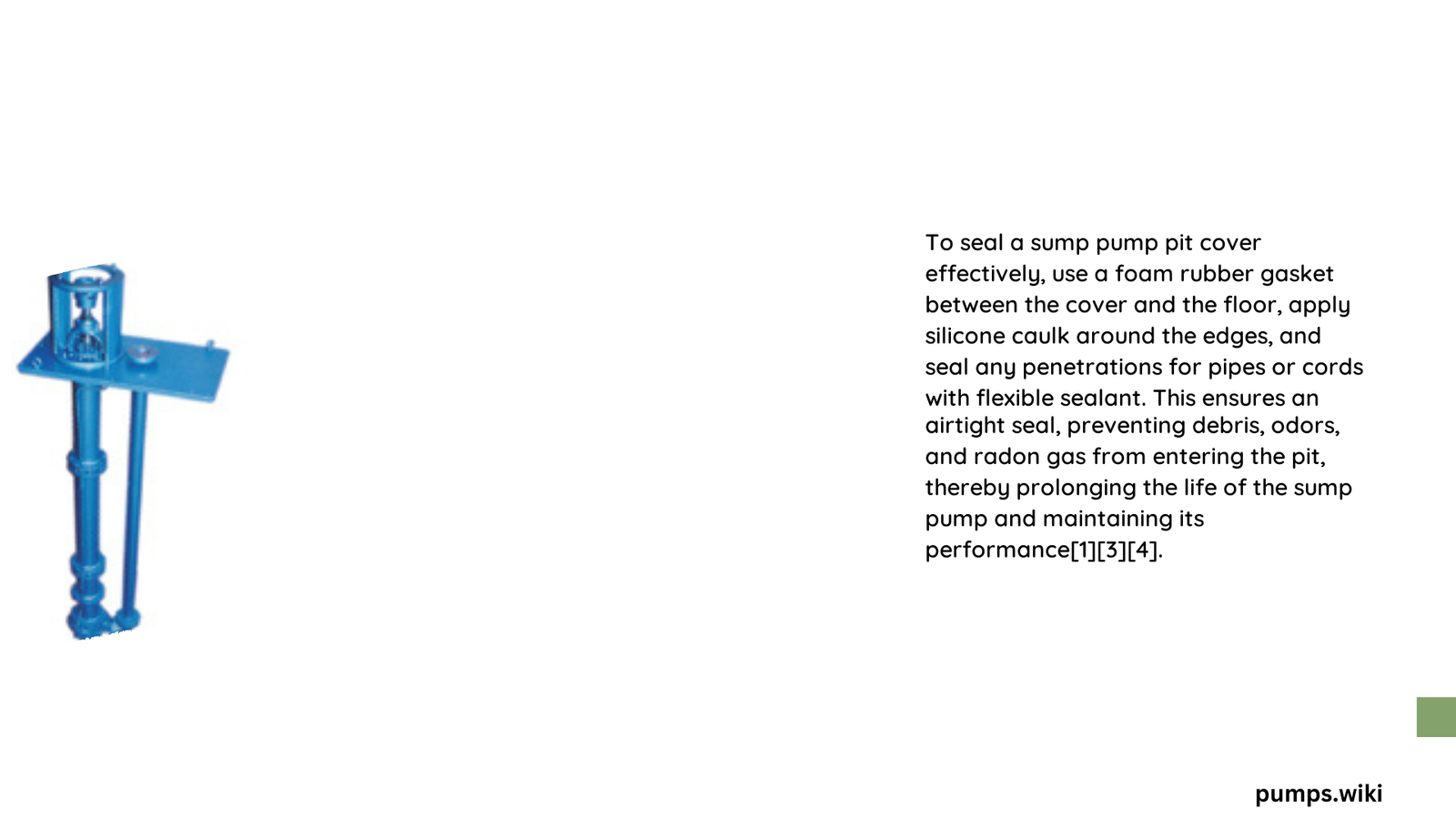A sump pump pit cover seal is a critical component in basement waterproofing and indoor air quality management. Homeowners need a comprehensive solution that prevents water infiltration, reduces radon gas exposure, and maintains the structural integrity of their basement environment. Proper sealing techniques using specialized materials like Lexan or ABS covers can significantly enhance moisture control and protect against potential health hazards.
What Makes a Sump Pump Pit Cover Seal Essential?
Sump pump pit cover seals serve multiple crucial functions in residential and commercial settings. They are not merely protective barriers but sophisticated systems designed to:
- Prevent moisture intrusion
- Block radon gas emissions
- Reduce basement humidity
- Minimize potential mold growth
- Enhance overall basement air quality
Why Choose Specific Sealing Materials?
| Material | Durability | Cost | Transparency | Moisture Resistance |
|---|---|---|---|---|
| Lexan | High | $$$ | Excellent | Superior |
| ABS | Moderate | $$ | Limited | Good |
| Rubber Gasket | Low | $ | None | Basic |
How to Select the Right Sump Pump Pit Cover Seal?
Selecting an appropriate sump pump pit cover seal involves considering several critical factors:
- Dimensional Accuracy
- Measure sump basin precisely
- Allow slight overlap for secure fitting
-
Account for potential basin shape variations
-
Material Performance
- Evaluate temperature resistance
- Check chemical compatibility
- Assess long-term durability
What Tools Are Required for Installation?
Essential tools for successful sump pump pit cover seal installation include:
- Measuring tape
- Silicone sealant
- Sharp cutting tool
- Drill
- Rubber gasket
- Compass or precise measuring instrument
How to Perform Proper Installation?
Installation requires meticulous attention to detail:
- Clean basin rim thoroughly
- Remove existing sealant completely
- Apply fresh silicone bead around rim
- Position cover with precise alignment
- Secure mechanically if necessary
- Seal electrical/plumbing penetrations
What Maintenance Practices Ensure Longevity?
Maintenance recommendations include:
- Annual comprehensive inspection
- Quarterly visual assessments
- Immediate replacement of damaged seals
- Check for potential leakage signs
- Monitor basement humidity levels
What Are Common Seal Failure Indicators?
Potential seal failure signs include:
- Visible moisture around pit edges
- Increased basement humidity
- Musty odors
- Visible mold growth
- Radon detection above recommended levels
How Often Should Seals Be Replaced?
Replacement frequency depends on:
– Material quality
– Environmental conditions
– Visible wear and tear
– Typically recommended every 3-5 years
Pro Tips for Optimal Performance
- Use high-quality silicone sealants
- Ensure complete surface cleaning
- Perform pressure tests after installation
- Consider professional assessment periodically
Conclusion

A well-executed sump pump pit cover seal represents a critical investment in home protection, offering comprehensive defense against moisture, gases, and potential structural damage.
